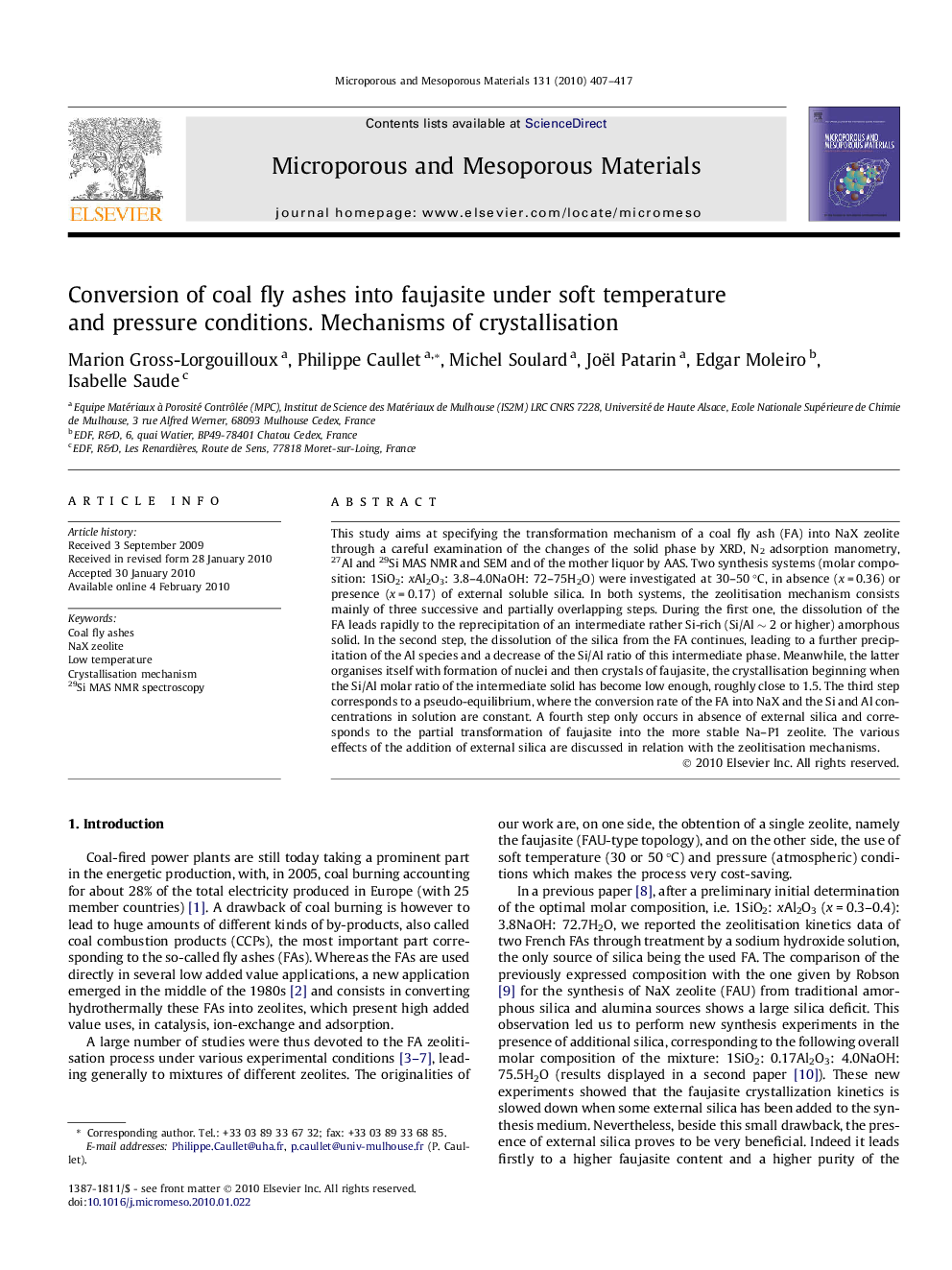| Article ID | Journal | Published Year | Pages | File Type |
|---|---|---|---|---|
| 75872 | Microporous and Mesoporous Materials | 2010 | 11 Pages |
This study aims at specifying the transformation mechanism of a coal fly ash (FA) into NaX zeolite through a careful examination of the changes of the solid phase by XRD, N2 adsorption manometry, 27Al and 29Si MAS NMR and SEM and of the mother liquor by AAS. Two synthesis systems (molar composition: 1SiO2: xAl2O3: 3.8–4.0NaOH: 72–75H2O) were investigated at 30–50 °C, in absence (x = 0.36) or presence (x = 0.17) of external soluble silica. In both systems, the zeolitisation mechanism consists mainly of three successive and partially overlapping steps. During the first one, the dissolution of the FA leads rapidly to the reprecipitation of an intermediate rather Si-rich (Si/Al ∼ 2 or higher) amorphous solid. In the second step, the dissolution of the silica from the FA continues, leading to a further precipitation of the Al species and a decrease of the Si/Al ratio of this intermediate phase. Meanwhile, the latter organises itself with formation of nuclei and then crystals of faujasite, the crystallisation beginning when the Si/Al molar ratio of the intermediate solid has become low enough, roughly close to 1.5. The third step corresponds to a pseudo-equilibrium, where the conversion rate of the FA into NaX and the Si and Al concentrations in solution are constant. A fourth step only occurs in absence of external silica and corresponds to the partial transformation of faujasite into the more stable Na–P1 zeolite. The various effects of the addition of external silica are discussed in relation with the zeolitisation mechanisms.
